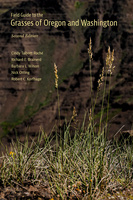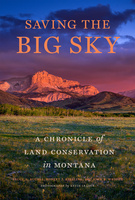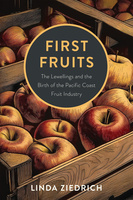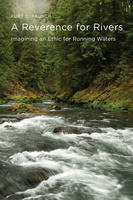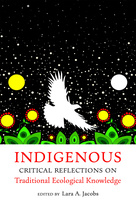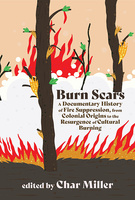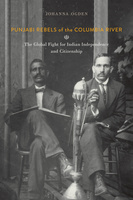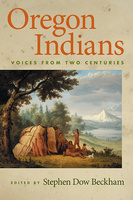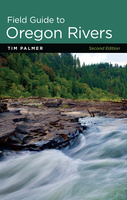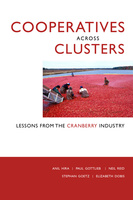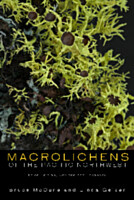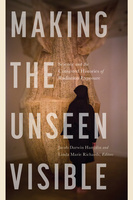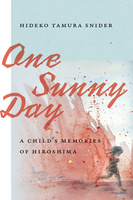Oregon State University Press
For fifty years, Oregon State University Press has been publishing exceptional books about the Pacific Northwest—its people and landscapes, its flora and fauna, its history and cultural heritage. The Press has played a vital role in the region’s literary life, providing readers with a better understanding of what it means to be an Oregonian. Today, Oregon State University Press publishes distinguished books in several academic areas from environmental history and natural resource management to indigenous studies.
Field Guide to the Grasses of Oregon and Washington, Second Edition
Saving the Big Sky
A Chronicle of Land Conservation in Montana
First Fruits
The Lewellings and the Birth of the Pacific Coast Fruit Industry
High Desert, Higher Costs
Bend and the Housing Crisis in the American West
A Reverence for Rivers
Imagining an Ethic for Running Waters
Indigenous Critical Reflections on Traditional Ecological Knowledge
Toward Oregon 2050
Planning a Better Future
How do we plan for a better Oregon in 2050? What will the state be like in that year for five million Oregonians, particularly for the least privileged and powerful residents? In this compelling volume, leading experts in land use and urban planning envision various possible futures and begin the work of developing statewide plans to guide Oregon through the decades ahead.
Listening to Survivors
Four Decades of Holocaust Memorial Week at Oregon State University
Listening to Survivors presents the voices of nineteen Holocaust survivors and two witnesses who shared their personal experiences with audiences at Oregon State University over the past four decades as part of the university’s Holocaust Memorial Week observance.
River of Renewal
Myth and History in the Klamath Basin
River of Renewal tells the remarkable story of the Klamath Basin, which spans the Oregon-California border, from the first human habitation of the region to restoration of the watershed and its wildlife after removal of the Klamath River’s four hydroelectric dams.
Virginia's Apple
Collected Memoirs
The fourteen literary memoirs collected in Virginia’s Apple explore pivotal episodes across poet and writer Judith Barrington’s life. Artfully crafted, each one stands alone yet they are linked—characters reappear and, taken together, the pieces create a larger narrative.
Nature on the Edge
Lessons for the Biosphere from the California Coast
In Nature on the Edge, ecologist Bruce Byers offers readers new perspectives on two iconic California coastal regions, San Francisco Bay and the Golden Gate and the Santa Barbara Channel Islands. While many people—in California and elsewhere—are familiar with these two areas, they may not know that they are part of a network of international biosphere reserves organized by the United Nations Educational, Scientific, and Cultural Organization (UNESCO). Nature on the Edge traces the history of nature conservation in these places and introduces the committed individuals who led those efforts and model effective action.
Burn Scars
A Documentary History of Fire Suppression, from Colonial Origins to the Resurgence of Cultural Burning
The first documentary history of wildfire management in the United States, Burn Scars probes the long efforts to suppress fire, beginning with the Spanish invasion of California in the eighteenth century through the US Forest Service’s relentless nationwide campaign in the twentieth century. In recent years, suppression has come under increasing scrutiny as a contributing factor to our current era of megafires.
Punjabi Rebels of the Columbia River
The Global Fight for Indian Independence and Citizenship
Punjabi Rebels of the Columbia River traces the global and local forces at play behind two momentous events in Indian and Indo-American history which began in Oregon in the early 1900s: the radical Indian independence organization known as Ghadar and Thind, an epoch-defining U.S. Supreme Court citizenship case.
Oregon Indians
Voices from Two Centuries
In this deeply researched volume, Stephen Dow Beckham brings together commentary by Native Americans about the events affecting their lives in Oregon. Now available in paperback for the first time, this volume presents first-person accounts of events threatening, changing, and shaping the lives of Oregon Indians, from “first encounters” in the late eighteenth century to modern tribal economies.
The book's seven thematic sections are arranged chronologically and prefaced with introductory essays that provide the context of Indian relations with Euro-Americans and tightening federal policy. Each of the nearly seventy documents has a brief introduction that identifies the event and the speakers involved. Most of the book's selections are little known. Few have been previously published, including treaty council minutes, court and congressional testimonies, letters, and passages from travelers’ journals.
Oregon Indians opens with the arrival of Euro-Americans and their introduction of new technology, weapons, and diseases. The role of treaties, machinations of the Oregon volunteers, efforts of the US Army to protect the Indians but also subdue and confine them, and the emergence of reservation programs to “civilize” them are recorded in a variety of documents that illuminate nineteenth-century Indian experiences.
Twentieth-century documents include Tommy Thompson on the flooding of the Celilo Falls fishing grounds in 1942, as well as Indian voices challenging the "disastrous policy of termination," the state's prohibition on inter-racial marriage, and the final resting ground of Kennewick Man. Selections in the book's final section speak to the changing political atmosphere of the late twentieth century, and suggest that hope, rather than despair, became a possibility for Oregon tribes.
Field Guide to Oregon Rivers
A practical, informative, and inspiring guide to the rivers of Oregon, ideal for residents of the state and visitors alike.
Cooperatives across Clusters
Lessons from the Cranberry Industry
Most agricultural production is of commodity or undifferentiated products. Producers suffer from a roller-coaster ride of price swings, over- or under-production, weather and pest threats, and the inability of family famers to capture anything beyond a small percentage of the final price.
Cooperatives Across Clusters provides lessons from the cranberry industry, a commodity product organized mostly into family farms in seven different clusters around North America. The industry is remarkable in that it's substantially organized around one large cooperative, Ocean Spray. The authors examine how the cooperative came to be, the challenges of coordination and industry leadership across the diverging clusters, and the lessons for cooperation for other agricultural industries.
The book provides a multi-layered contribution to agricultural economics. First, it examines location decisions and what factors supersede growing conditions to allow industries to arise around production. Second, it explores pathways available for farmers to try to overcome, through cooperative organization, the natural boom-bust cycles of commodity price swings. Third, it looks at how cooperative decisions are made, and the challenges of providing industry leadership, including research and development and collective marketing, through a cooperative that faces continual defections and new problems. Finally, through in-depth historical, statistical, and field research, it provides a comprehensive study of the cranberry industry and suggests ways farmers can grow the industry. Agricultural policymakers, farmers, industry specialists, and researchers of agriculture and clusters more generally will find this to be an important and informative new resource.
I Lived to Tell the World
Stories from Survivors of Holocaust, Genocide, and the Atrocities of War
I Lived To Tell the World recounts the experiences of individuals who have survived Holocaust, genocide and the atrocities of war, honoring the complexity of the survivor’s stories while providing historical and cultural context for these troubling worldwide events.
Macrolichens of the Pacific Northwest
A key component in healthy ecosystems, lichens can be found in almost any natural habitat in the Pacific Northwest. This comprehensive guide to the region’s macrolichens is intended for use by beginners as well as specialists: weekend naturalists will be able to identify specimens and recognize the great diversity of lichens, while lichenologists and mycologists will gain greater knowledge of the distribution and abundance of various species.
This updated third edition of Macrolichens of the Pacific Northwest includes 95 additional species and an expanded introduction. It features keys to 109 genera and 681 species of Oregon and Washington macrolichens—all the macrolichens known or expected to occur in the two states. The keys also provide excellent coverage for lichens of Idaho and Montana, inland to the Continental Divide. Color photographs and detailed descriptions emphasize lichens prevalent in forested ecosystems.
The illustrated glossary and introductory material cover the terminology needed to identify macrolichens and provide information on collection and handling. The biology, ecology, and air-quality sensitivity of lichens are discussed; regional air-quality sensitivities are provided for nearly 200 species.
Macrolichens of the Pacific Northwest will prove invaluable to anyone seeking to identify lichens or to better understand these organisms and their vital role in the natural world.
Making the Unseen Visible
Science and the Contested Histories of Radiation Exposure
Many of the effects of nuclear fallout and radiation have been intentionally hidden by governments around the world. Public knowledge has been driven by activists demanding recognition and justice. Many Downwinders fought for years, in the press and in the courts, to have their health and environmental concerns taken seriously. Just as radiation is invisible, many of these stories continue to be unseen.
From 2017 to 2020, Jacob Hamblin and Linda Richards facilitated the Oregon State University Downwinders Project, sponsored by the National Science Foundation, to support research and scholarship on the Downwinders cases near the Hanford nuclear site in Washington. Additionally, each summer the project team sponsored a workshop that brought a variety of stakeholders together to explore the science, history, and lived history of radiation exposure. These workshops took a broad view of nuclear contamination, beyond Hanford, beyond the United States, and beyond academia. Community members and activists presented their testimonies and creative work alongside scholars studying exposure worldwide.
Making the Unseen Visible collects some of the best work arising from the project and its workshops. Scholarly research chapters and reflective essays cover topics and experiences ranging from colonial nuclear testing in North Africa to uranium mining in the Navajo Nation and battles over public memory around Hanford. Scholarship on nuclear topics has largely happened on a case study basis, focusing on individual disasters or locations. Making the Unseen Visible brings a variety of current community and scholarly work together to create a clearer, larger web uniting nuclear humanities research across time and geography.
One Sunny Day
A Child's Memories of Hiroshima
“Every year when the days begin to stretch and the penetrating heat of summer rises to a scorching point, I am brought back to one sunny day in a faraway land. I was a young child waiting for my mother to come home. On that day, however, the sun and the earth melted together. My mother would not come home. . . .”
Hideko was ten years old when the atomic bomb devastated her home in Hiroshima. In this eloquent and moving narrative, she recalls her life before the bomb, the explosion itself, and the influence of that trauma upon her subsequent life in Japan and the United States. Her years in America have given her unusual insights into the relationship between Japanese and American cultures and the impact of Hiroshima on our lives.
This new edition includes two expanded chapters and revisions throughout. A new epilogue brings the story up to date, covering Hideko’s work as an anti-nuclear activist, including her visit to the Enola Gay at the National Air and Space Museum in Washington, DC. This poignant story of courage and resilience remains deeply relevant today, offering a profoundly personal testimony against the ongoing threat of nuclear warfare.

